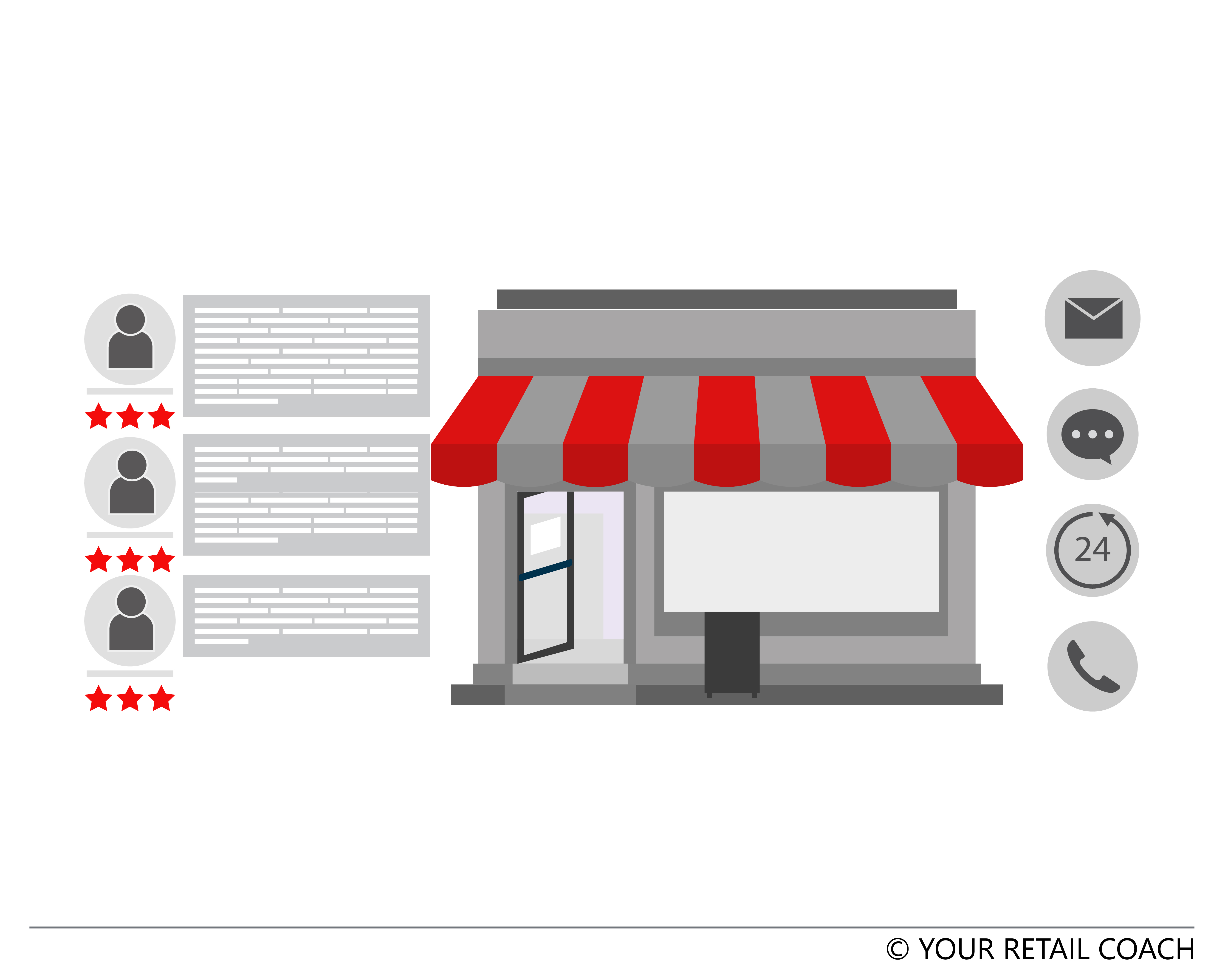The retail industry is undergoing fierce competition. Customers have plenty of options when it comes to spending their time and money between e-commerce sites and traditional retail stores. In order to stay competitive, you need to give them compelling reasons to visit your retail store. A brick-and-mortar business should always be looking for ways to improve their retail customer experience and one of the greatest brand differentiators in a retail store environment is the customer experience. This includes everything from how your store looks to how employees engage with customers to whether or not customers have a positive or negative experience at checkout.
Retail in 2022 is all about the seamless retail customer experience. From online to in-store to hybrid, you should create a cohesive, positive, and frictionless customer experience, no matter where the customer journey begins, whether it is marketing, customer service, or sales. Consistent retail customer experience drives retention, satisfaction, referrals, and sales. As per PWC case studies, it is estimated that 59% of Americans will walk away from a company or product after several bad experiences, 17% following a single bad experience, even if they love the company or product, and 32% of all customers would stop doing business with a brand they loved after one bad experience. This itself proves the importance of maintaining a good relationship with your customer.
What Makes a Customer’s Shopping Experience Seamless?
For creating a seamless retail customer experience, brands should focus on combining customer data to offer personalized consumer interactions and to provide a continuous journey across channels, both online and offline, as the shopper moves from one to the other and back again. Every interaction should be focused on keeping the customer engaged, removing friction from their journey, and ensuring that they receive a great experience. The following five components are critical to achieving seamlessness in an era when retail customer experience is just as important as the actual merchandise:
1. Informed
Without insight, businesses cannot achieve continuity. Hence, a holistic view of the customer is essential for success, so that you can recognize consumer behaviors, needs, and interests across both channels. Experian data revealed that 97% of organizations desire a complete view of their customers, but 81% of marketers are struggling to do so. To fully understand their customers, organizations must tap into their own first-party data.
2. Connected
Brands must be able to collect, connect, and utilize disparate data sources both online and offline in order to recognize customers across channels and create consistency. The ability to connect first-party data to each step in the customer journey is imperative for businesses looking to achieve true seamlessness, no matter how many times consumers switch between the channels.
3. Fast
Consumers switch devices quite often, as is fairly well known. Criteo estimates that 40% of e-commerce transactions involve multiple devices on the path to purchase. Nevertheless, marketers need to be prepared for the speed at which they switch between platforms. For online retail stores, it is critical that brands are able to connect first-party data, recognize consumers across channels, and personalize as their customers switch from desktop computers to tablets and between in-store and online experiences.
4. Personalized
Creating a truly seamless and personalized retail experience means tailoring every step to the individual’s preferences, past shopping behavior is the key to a seamless customer experience. Research by eMarketer found that 81% of consumers desire easy, personalized, and relevant online shopping experiences.
5. Device Optimized
In addition, in order for a business to create a truly continuous Omni channel retailing seamless experience, its digital properties need to be optimized for varying devices ranging from smartphones to tablets to desktop computers. Adobe reports that 39% of users will leave a website if it takes too long or the images do not load. Consumers should expect a consistent browsing experience regardless of the device or channel.
How to give a seamless retail experience to your customers at your retail store?
Customer experience is seamless if, whether online or offline, the same branding, structure, values, and tone are displayed. To provide ease and simplicity for their customers, companies can use the following strategies:
Relationships with customers come first
You must engage with your customers to build strong customer relationships, no matter how big or small your retail business is! Your brand’s long-term success depends on its ability to build trust with customers over time. Consumers today constantly evaluate the relationship they have with the brands in their lives, and a few mistakes could cause your business to be dropped. You can, however, dramatically increase your lifetime customer value if you consistently impress your customers with caring, personalized service. For instance, by putting your heart into every interaction with your customers, your business can gain a huge competitive edge
Business owners need to be aware of the importance of a strong relationship built on loyalty, mutual respect, and the desire to make both parties happy. You must know that customers can act as your sales force by telling other individuals about your company’s benefits. Thus, in order to remain successful, you need to hear directly from your customers about what is working and what isn’t and then work on it accordingly.
In the absence of a personal connection, a potential customer may not sign up or may never return. Consistency is valued by customers, and they will not tolerate rudeness, neglect, or non-performance of promises. Unsatisfied customers will spread the word about their bad experiences to all of their contacts. Zendesk reports that 87% of customers believe brands need to put more effort into providing a more seamless, consistent experience across all channels. Thus, customer relationships will always be at the core of the business, no matter what fancy buzzwords appear or what new technology emerges!
Learn about your target customers and their journey
An impressive website, quality products, and a customer support team on call may seem like the perfect mix to attract prospective clients, but when customers feel unsatisfied with their buying journey, they are more likely to look at your competitors the next time. You focus your business on your customers by improving the retail customer experience at each stage of the journey, putting them at the center of everything you do.
Every customer is unique, and even if the end goal of making a purchase is the same, the steps they take to get there will differ. As a result, it’s important to know your “target customer” and understand the journey they take as they research, decide, and buy. The journey of customers also helps brands understand how they seek out products and services that meet their needs and expectations and what role a specific business plays in this process. You can map the customer journey by considering each stage of buying a product, i.e. note down what the customer feels and what action must be taken at each stage.
The psychology behind online and offline shopping
No matter if they shop online or in-store, customers are looking for convenience. The trend of shopping online has decreased the consumer’s time to go outdoors in this agitated lifestyle. Still, the offline mode of shopping has its own benefits and can never go out of style. Going to conventional retail stores and buying products is still the favored choice of the massive population. Hence, combining digital and offline platforms or an omnichannel approach can provide the best customer experience
By combining online deliveries with traditional retail models, retailers will be able to increase their visibility, drive sales and traffic, and integrate digital touchpoints. Combining online deliveries with conventional stores can change the brick-and-mortar business model, as offline stores, when paired with a digital app, eliminate lines at checkout, cashiers, and the entire checkout process altogether. Consumers can probably scan the barcode on the mobile app to shop easily; using IoT and sensors, the mobile app will track when products are taken or returned from the shelf and then update the cost in their account accordingly. As a result, the omnichannel retail model provides better customer satisfaction while simultaneously providing more purchase channels to customers.
Managing customer relationships with the right tool
As a retailer, you have the chance to create a personal connection with each and every customer who comes into your store or visits your website. A CRM system also called a Customer Relationship Management System, allows you to collect and access data to enhance those relationships. CRM software basically allows you to centralize, optimize and streamline your contact with your customers.
Even though it may sound simple, the mere fact that all contact information is in one place makes CRM a super-effective communication tool. The CRM system gives your sales, marketing, and customer service teams an advantage by offering easy access to key information. CRM also lets you sort your data according to categories and criteria, making it easy to create targeted lists. CRM is not only great for finding and nurturing new customers, but it’s also a great way to keep your existing customers happy.
Consistency is the key
Consistency provides your customers with a sense of security and they are happy to return for the level of service they have come to expect and the quality of products they have grown to love. The creation of loyalty and trust will go a long way if you create a strong brand and communicate it to your customers.
It is not necessary to be a large retailer to offer a seamless and satisfying retail customer experience. As long as you learn what your customer wants and how they make purchasing decisions, use the right tools to interact with them, and develop a brand that nurtures customer relationships and maintains consistency, you will ensure that your customers have a great experience, and come back to you for more.
Conclusion
There is a certain level of service that customers have become accustomed to! The level of customer service is high due to so much competition, and it is likely to keep increasing as retailers continue to innovate. When it comes to in-person or even online interactions, the retail customer experience makes all the difference. When you have a highly trained team that understands customer needs and is equipped with great technology to accommodate them, you can build long-term relationships with your customers.
About YRC
Your Retail Coach has a team of strategists, specialists, and experts with all the experience and qualities needed to execute a successful retail business be it online or offline, or a combination of both! At YRC, we also work with existing retail businesses to help them achieve greater business excellence. YRC focuses primarily on improving your retail business growth by minimizing challenges and maximizing ROI. A YRC consultant can assist your business in achieving key goals and gaining actionable insights at different stages of your retail store’s setup. Read more about eCommerce and retailing! Check out our resources now!
Blog: https://www.yourretailcoach.in/blog/
Youtube Channel: https://www.youtube.com/c/YOURRETAILCOACH











